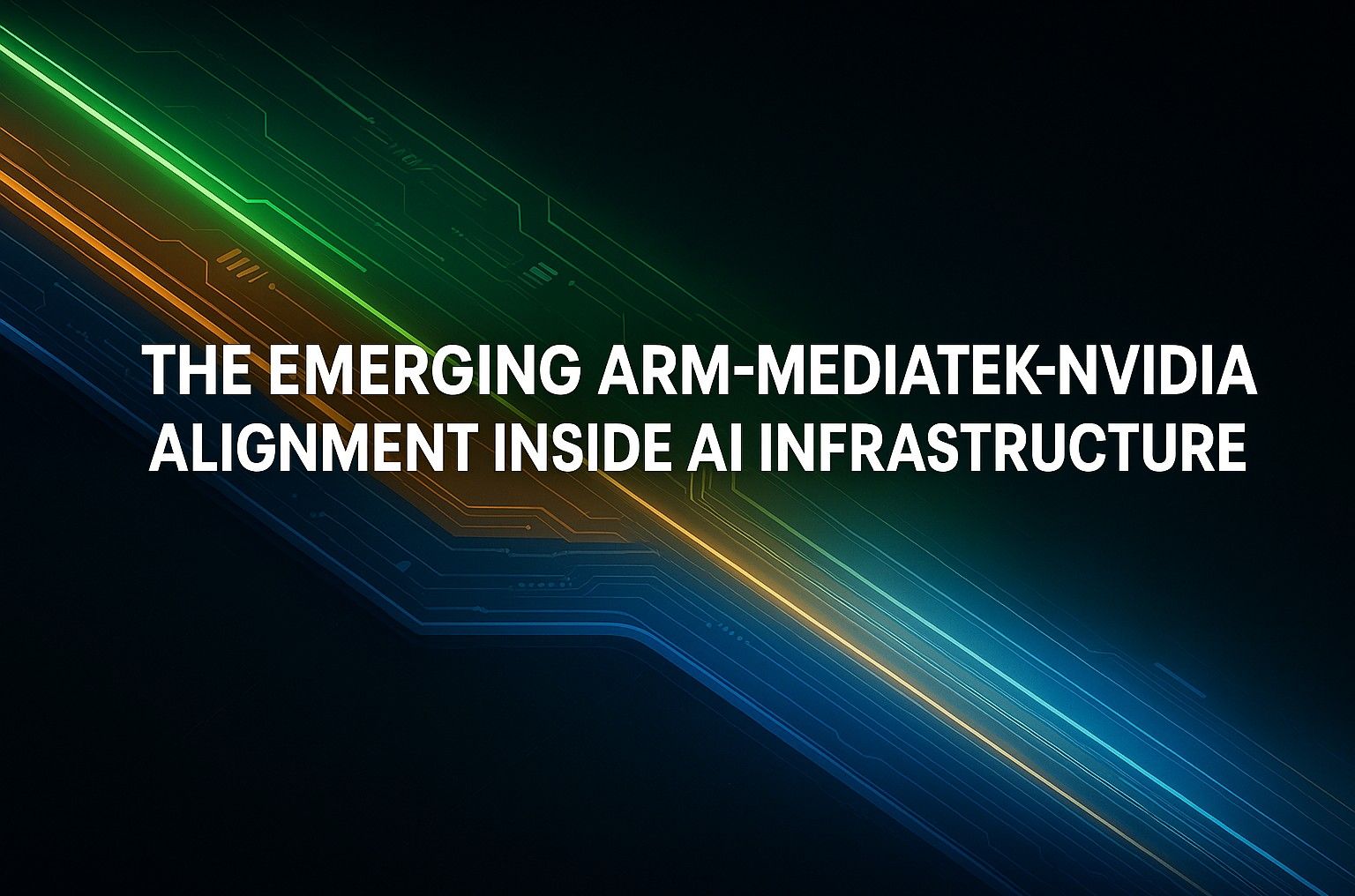AI infrastructure today spans GPUs, CPUs, custom accelerators, and new workload-specific silicon. The landscape remains fluid, and the categories that ultimately dominate may look different from those imagined today.
But beneath the surface, a broader and more consequential alignment is forming across Arm, MediaTek, and Nvidia — one that offers hyperscalers something increasingly valuable: customization, standardization, and ecosystem coherence.
This axis already exists. It doesn’t need to be created. It only needs to be activated into whatever categories the next phase of AI infrastructure ultimately demands.
MediaTek’s Infrastructure Path Is Real — and Material
MediaTek now has clear visibility into meaningful, customer-backed AI-ASIC infrastructure revenue:
$1B in 2026
multiple billions in 2027
a path toward $5–7.5B beyond 2028
These figures are tied to hyperscalers making long-range architectural decisions, not speculative bets.
MediaTek’s custom-silicon DNA fits the moment: hyperscalers are moving toward silicon defined around their own workloads and architectural intent. MediaTek is structurally built for this style of execution: high-mix, customer-specific silicon delivered efficiently at scale. Management has also indicated that cloud-ASIC revenue should be operating-margin accretive from day one, making this not only growth, but high-quality growth.
And MediaTek’s alignment with Arm is intentional. It builds on Arm Neoverse compute subsystems and participates in Arm’s Total Design ecosystem, placing it directly within the control-plane standards hyperscalers increasingly prefer.
The Structural Alignment Across Arm, MediaTek, and Nvidia
Across the AI-infrastructure stack, three layers are converging in complementary ways.
Arm is rapidly becoming the standard control-plane architecture in AI datacenters globally. With platforms like Graviton, Axion, Cobalt, and Grace, Arm projects that close to half of the compute shipped into major hyperscalers in 2025 will be Arm-based — establishing a clear architectural baseline. Arm’s move to join Nvidia’s NVLink Fusion ecosystem further tightens this alignment, allowing Neoverse-based SoCs to integrate directly into Nvidia’s fabric.
MediaTek provides the custom-silicon engine capable of translating hyperscaler intent into specialized ASICs at scale. Its cost structure and rapid-integration capabilities give it a distinctive entry point relative to traditional merchant-silicon suppliers.
Nvidia anchors the dominant execution and platform environment — spanning software stacks, runtimes, compilers, frameworks, orchestration layers, and cluster fabrics. Its architecture defines how modern AI systems operate, ensuring that Nvidia remains the gravitational center, whether the underlying silicon is its own GPUs or a partner’s custom accelerator.
Together, these layers form an axis hyperscalers can adopt with exceptionally low friction. And as new categories emerge, this axis does not need to build a new ecosystem, it only needs to activate product tracks within the ecosystem that already dominates.
Dedicated Inference Silicon: A Category Still in Flux
Inference-specific silicon has become a topic of growing interest, but its long-term scale and centrality inside AI infrastructure remain open questions. Today, inference runs across:
Nvidia GPUs (often repurposed from training)
CPUs, increasingly Arm-based
custom accelerators
and several specialized but still niche ASIC architectures
Whether a large, distinct “dedicated inference silicon” market emerges will depend on several evolving factors:
GPU cost/performance trajectories
expanding roles for Arm CPUs in inference
growth in workload-specific accelerators
the software-validation tax required when adopting a new architecture
If dedicated inference silicon does become a meaningful category at scale, the Arm–MediaTek–Nvidia alignment is structurally well-positioned. Arm defines the control plane. Nvidia anchors the software and fabric environment. And MediaTek can deliver tailored silicon that inherits both, without forcing hyperscalers to re-validate their software stack on a new architecture.
In other words: If this category scales, the ecosystem with the least friction will have the advantage, not necessarily the one with the highest standalone performance.
A Larger Strategic Shift
Whether many dedicated silicon categories ultimately expand inside AI infrastructure remains uncertain. But a broader trend is unmistakable:
Arm is gaining influence directly through hyperscaler CPUs
MediaTek is gaining influence indirectly through custom AI ASICs built atop Arm infrastructure
Nvidia continues to anchor the platform and fabric environment that everything else must integrate with
If new categories inside AI infrastructure emerge, the ecosystem best positioned to shape them is already visible, already aligned, and already operating at meaningful scale. It simply hasn’t been fully activated for all those categories yet.
And in that environment, the next phase of AI infrastructure may not be defined by raw standalone performance, but by who offers the lowest-friction path through architectures hyperscalers are already choosing.
On that dimension, the Arm–MediaTek–Nvidia alignment holds a far stronger position than many realize.

